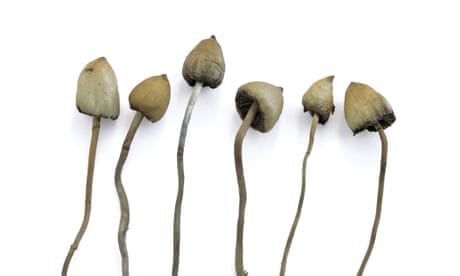Cannabis may enhance night vision
New research shows that the drug makes cells in the retina more sensitive to light
theguardian.com
25 years ago, pharmacologist M. E. West of the University of the West Indies inKingston, Jamaica, noted that local fisherman who smoke cannabis or drink rummade with the leaves and stems of the plant had “an uncanny ability to see in thedark,” which enabled them to navigate their boats through coral reefs. “It wasimpossible to believe that anyone could navigate a boat without compass andwithout light in such treacherous surroundings,” he wrote after accompanyingthe crew of a fishing boat one dark night, “[but] I was then convinced that theman who had taken the rum extract of cannabis had far better night vision than Ihad, and that a subjective effect was not responsible.”
Some of these crew members told West that Moroccan fishermen and mountaindwellers experience a similar improvement after smoking hashish, and in 2002,another research team travelled to the Rif mountains in Morocco to investigatefurther. They gave a synthetic cannabinoid to one volunteer, and hashish to threemore, then used a newly developed piece of kit to measure the sensitivity of theirnight vision before and after. Confirming West’s earlier report, they found thatcannabis improved night vision in all three of their test subjects.

How marijuana impairs memory
Read more
Now, another study provides hard evidence for the claim, revealing a cellularmechanism by which cannabis might improve night vision. The findings,published recently in the open access journal eLife, could eventually be applied tothe treatment patients with degenerative eye diseases such as retinitispigmentosa.
West had suggested that cannabis might improve vision by acting on the eyemuscles to dilate the pupils, so that more light falls on the retina, but otherexperiments ruled this out by showing that marijuana constricts the pupils. It’salso possible that the drug can influence activity in the visual cortex at the back ofthe brain, but the CB1 receptor protein, which binds the psychoactive ingredientof cannabis, is found at far higher levels in the eye than in the visual cortex,suggesting that any effects the drug has on vision are likely due to its actions onretinal cells.
In one set of experiments, they applied a synthetic cannabinoid to eye tissuepreparations from the tadpoles, and used microelectrodes to measure how retinalganglion cells, whose fibres form the optic nerve, respond to light. Theresearchers found that this made the cells more sensitive, increasing the rate atwhich they fired to both bright and dim light stimuli. Closer investigationrevealed that this occurred due to inhibition of a protein called NKCC1, via itsactions on the CB1 receptor.Lois Miraucourt of the Montreal Neurological Institute and his colleagues lookednot to stoned fishermen, but to tadpoles of the African clawed toad, Xenopuslaevis, which are transparent and, therefore, amenable to all sorts of experimentsthat cannot be performed in humans or other lab animals.
NKCC1 is a co-transporter protein that normally shuttles sodium, potassium, andchloride ions in and out of cells, and their concentrations determine the electricalproperties of nerve cells. Overall, these experiments show that cannabinoidsreduce the concentration of chloride ions inside the retinal ganglion cells, makingthem more excitable and more sensitive to light.
Miraucourt and his colleagues then carried out another set of experiments todetermine if the cellular responses they observed could contribute to vision.Tadpoles have a natural tendency to avoid dark moving dots, and the researchersexploited this by putting some tadpoles into a Petri dish, showing them dark dotsunder various lighting conditions, while using specially designed video-trackingsoftware to track the movements of the tadpoles and the dots, and to measure thetadpoles’ avoidance responses.

A brief history of psychedelic psychiatry
Read more
Under normal lighting conditions, they observed no differences between tadpolestreated with a synthetic cannabinoid and untreated ones. In the dark, however,tadpoles given the cannabinoid avoided significantly more dots than untreatedones, which only responded to the dots as if by chance. Thus, the researchersconclude that the enhanced cellular responses observed in their first set ofexperiments improved the tadpoles’ sensitivity to contrast under low-lightconditions.
Whether the findings are applicable to humans remains to be seen but, if so, theycould pave the way to treatments for diseases such as retinitis pigmentosa andglaucoma, which cause blindness by killing off cells in the retina. Cannabinoidsare known to have a neuroprotective effect on retinal cells, so treatments basedon the drug may, in theory, not only improve vision for patients withdeteriorating eyesight, but also slow down the progression of such diseases.
ReferencesMiraucourt, L. S., et al. (2016). Endocannabinoid signaling enhances visualresponses through modulation of intracellular chloride levels in retinal ganglioncells. eLife, 5: e15932. DOI: 10.7554/eLife.15932 [Full text]
Russo, E. B., et al. (2004). Cannabis improves night vision: a case study of darkadaptometry and scotopic sensitivity in kif smokers of the Rif mountains ofnorthern Morocco. J. Ethnopharmacol., 93: 99–104 [PDF] |






